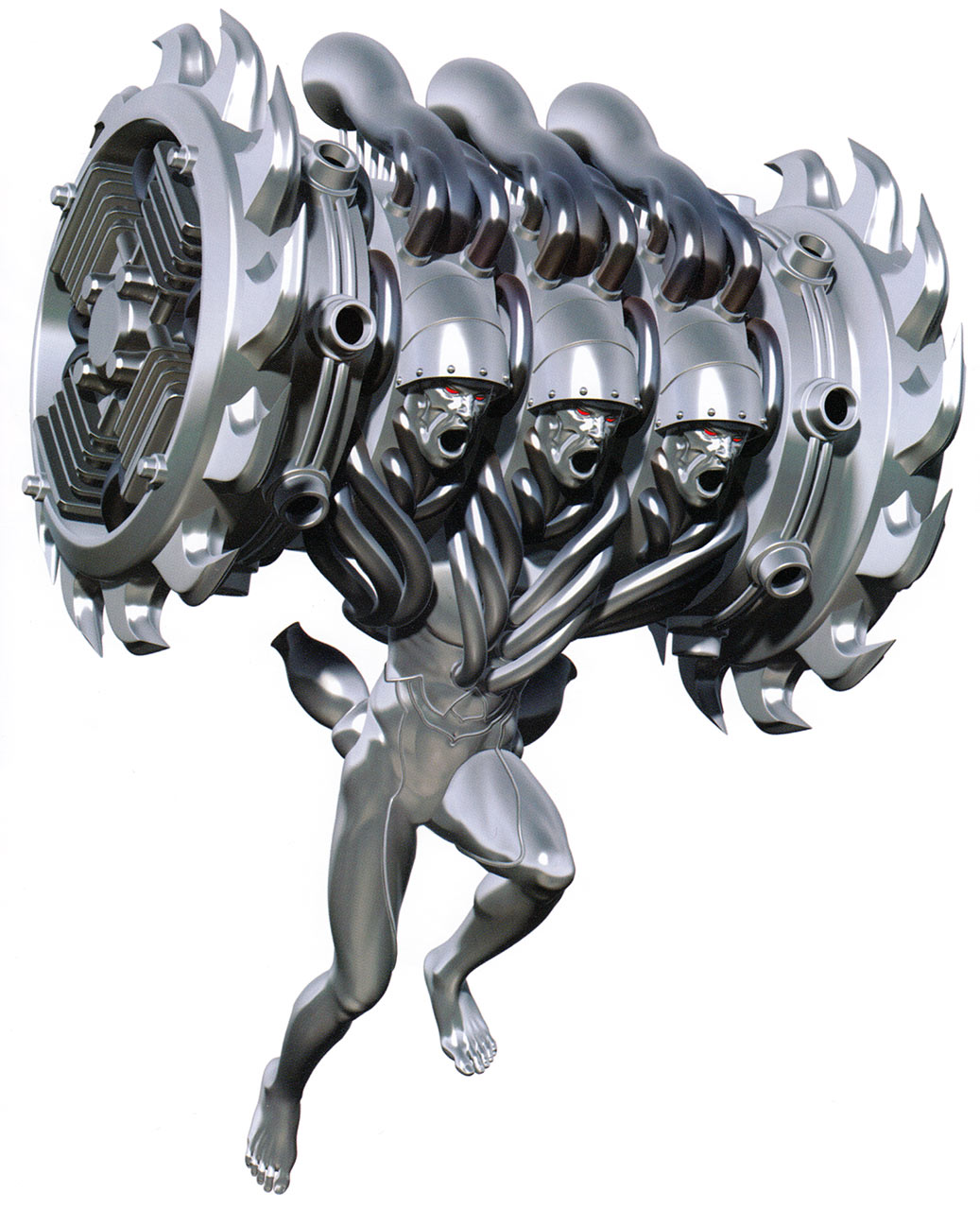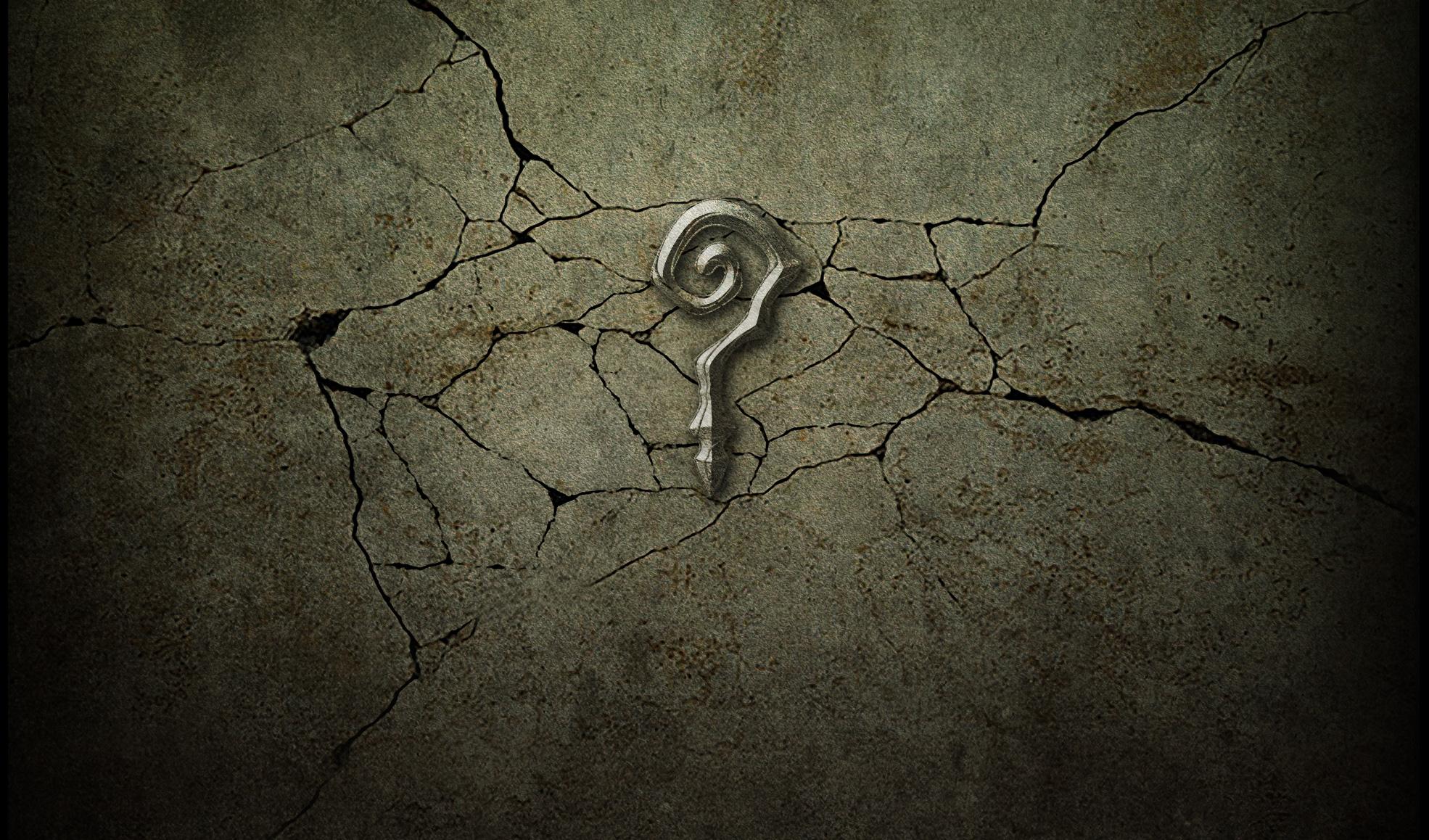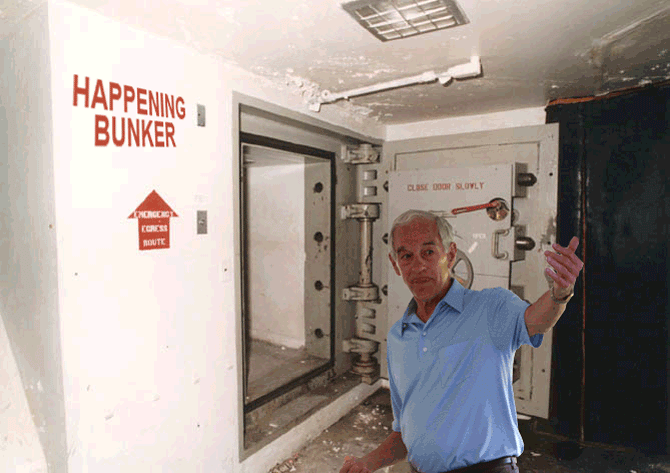The Nocturne remark was because reading that article, it seemed like you didn't only dislike the excuses used by the game, but also the very concept they were going for. Regarding SMTI, the places with the largest number of npcs are the later locations dominated by the Gaeans and Messians, but you also get various smaller underground shelters beforehand that survived without being controlled by them. The first one you find, in post-apocalyptic Shinjuku, is even ruled by a bunch of thugs similar to the Ashura Kai. There were business, stores and even bars, and the only thing keeping order there were enforcers and one particularly strong demon working for Ozawa, the leader of the group.
The Ashura Kai keeps a similar order while having fighters that you can even meet as random encounters, a few strong demons and the Reds. It's true that Ozawa was much smaller than the Ashura Kai, which controls a large part of Tokyo, rather than a single district, but the Reds explain that difference. In spite of the Reds though, people aren't really walking on the streets of Tokyo, only in the underground shelters ruled by the Ashura Kai or Gaeans. The people you meet outside are exactly Gaeans, Ashura Kai members and a few hunters. So, there's obviously a sense that things are still dangerous in spite of any agreement.
Well, I only jumped into the conversation here because of the Nocturne comment. I wasn't going to let that stand.

Anyway, the game's issues with this stuff probably began during considerations over the backstory concept. Simply, how would they justify the fact that humans have lived in the Tokyo underground for 25 years? And did they even need to explicitly say why in the first place?
As we know, yes, they did, I guess because it probably would have seemed like a huge plothole if they hadn't. So we got the Ashura-kai setup that's similar to Ozawa's group (more on Ozawa below) and, of course, the Reds. I will definitely concede that the roaming Ashura-kai hordes attempt to illustrate some semblance of law in the city, but I still think the Reds cause more problems than they solve, for reasons I already exhaustively went over in the article. But it's precisely because a plot device like the Reds tries to explain the minutiae in an environment filled with supernatural beings that it ends up tongue-tied. I think the game would have been better without trying to use Reds as an explanation; trust the audience and leave certain things to the imagination.
But as far as the humans' survivability goes, I'm way less interested in the Ashura-kai or Ring of Gaea than I am the regular humans and hunters. That's why, when I looked at the world-building more closely, I found it so puzzling that relatively few of them seemed to be all that affected by their environment, one where their shelters are literally surrounded by murderous demons and monsters, where everyday they must inevitably hear blood-curdling death screams and gunfire and witness horrible gory atrocities from hunters who don't quite make it. Instead, an appealing idea for these humans is to have long-running death tournaments where large crowds want to see the losers get their throats slit, even though able-bodied hunters should be prime assets in Tokyo. (And no, I wouldn't usually consider sidequests in an analysis focusing on the main narrative, but, like I say in the article, the hunter tournament is mandated on Neutral.) It just seems counter-intuitive.
To reiterate myself again, we've never dealt with a demon invasion in real life, so we can't say for sure how people would act. I'm also not asking for something completely realistic, like
this article on subjective quality of life in war-affected populations, which suggests that post-traumatic stress disorder is an issue even many years after war; SMTIV's Tokyo is certainly an ongoing warzone of sorts. It just needs to be internally consistent. The closest analogues in pop culture might be zombie movies. Consider SMTIV's Tokyo as a large scale Dawn of the Dead. Yeah, the people in the mall have their fun at first because they think they are completely safe from the zombies, but of course they are not and the situation goes south immediately. In SMTIV, not only should the Tokyo "mall" be completely looted of most things of immediate value (like food and clothing, not the various weird bits you can pick up as relics, like vibrators), its primary means of safety is a tenuous agreement (even discounting its lack of internal consistency). It's a zombie movie with unpredictable zombies, and these high stakes aren't always consistently reflected. Unfortunately, I think what the game was going for with its Tokyo ultimately precluded it from plausible consistency. However, this may just be something we have to agree to disagree on as this is already way more than I ever wanted to write about SMTIV again.

Something I didn't mention in the piece is Mikado's time dilation; I was going to put it as a caption but couldn't find an appropriate screenshot since few NPCs even mention it. It certainly seems like it would be a concept beginning for further explanation, but the game doesn't do that. And because of that, it's left to be something of a mystery. Which I think is good! No overwrought justification means there's nothing to potentially go sour. And, honestly, time dilation shouldn't seem particularly objectionable with everything else that goes on in the game!
But as for Ozawa, and this is unrelated to your own points, is that he doesn't just exist to be a post-apocalyptic mob boss, he's also the plot device that triggers Chaos Hero's own transformation. Because he exists primarily for the Chaos Hero's motivations, he's an organic fit within the narrative. I don't even mean in comparison to Tayama, though I do wish an element related to Tayama had more personal connections to the Samurai, i.e., the nameless Samurai guy who is held as Tayama's captive. It would have been so much more personal to have Hope as a captive, as he does absolutely nothing of value once you step foot into Tokyo. Oh well.

Regarding the Reds and books, it's true that SMTIV's biggest difference in relation to the previous games, as far as the nature of the demons go, was introducing those fairly easy ways for humans to become generic demons, however, it's all still tied into the idea of thoughts shaping and creating demons, a concept that exists since at least SMTII. In SMTIV, it's even said that the expanse is shaped by those thoughts, tying everything together. The interdimensional demons aren't different in nature from the ones created on Earth itself.
The concept of humans becoming standard Demons no different from the ones coming from the Expanse is hardly new to SMTIV either. It's just the first time where pure human thought is shown to be able to trigger that transformation, but I don't think it's a big leap from what had been seen before. In SMTI, although the Chaos Hero became an unique entity after fusing with a demon, the Gaeans and Messian followers become just random standard demons once fused. There were also various standard demons in others games that were said to be humans that somehow became demons, like the Urban Terrors in Soul Hackers.
Well, first, the thoughts = shaping demons thing. I'm not really going to touch that. As the concept exists throughout the series, it's... fine. Nothing more, nothing less. It's very nebulously defined, but that's good, I think. It leaves something up to the imagination or interpretation.
Reds and books, however, do not. Also, the manner in which humans become demons in SMTIV is completely new and none of your examples are compelling.
1. Yeah, Chaos Hero becomes a "demonoid."
2. The Gaean and Messian "demons" do not count. The fact that they become compendium demons after fusion is completely gameplay-related with zero plot ramifications. But, let's say it does count-- there would still be no evidence that the resulting demons exhibit any memory or personality of the former human as in SMTIV. Still apples and oranges.
3. Those weird Devil Summoner/Soul Hackers Fouls like Urban Terror or Hooligan are certainly described as such, but they are never anything more than the demons they are: Original creations. Shitty people became images of general murderers instead of specific demons from folklore, like, say, Stolas or an Oni. They are also mere battle fodder in their respective games, unlike the plot-relevant Reds-takers in SMTIV.
Again, it's not just that Reds/books transform humans into demons, it's the idea of the humans retaining their personalities and memories. (Because of this, the transformation demons do seem to be different from those from the Expanse.) So the transformation just changed their appearances and, potentially, their abilities? Why would that happen when the same demons they transform into are individual entities in all other instances? This is just another case of the game explaining too much and writing itself into a corner because of it.







